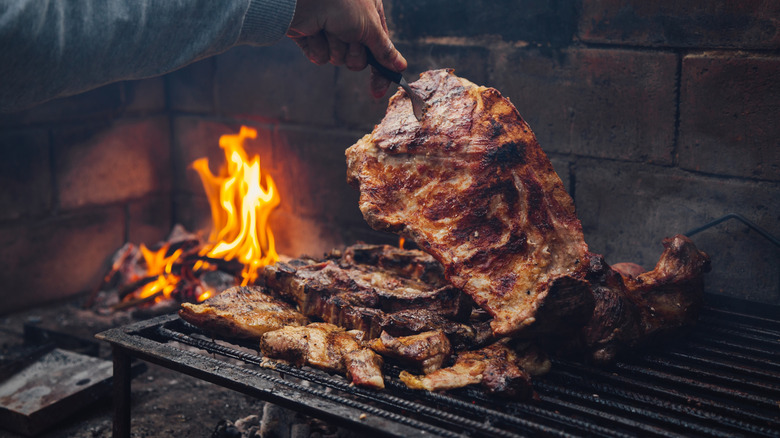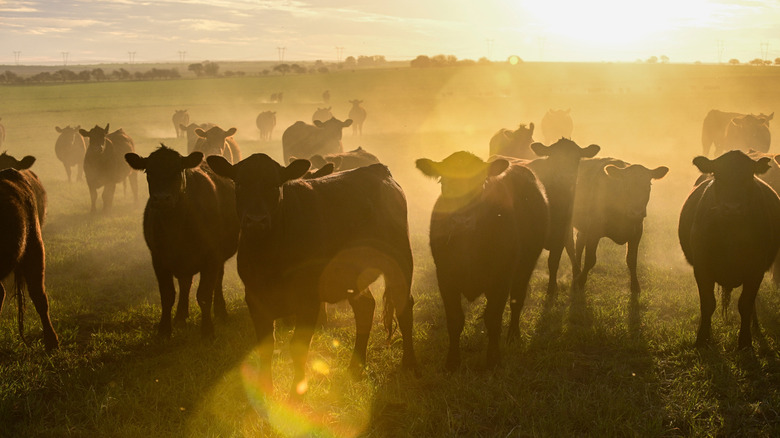Why Argentina Steaks Are Some Of The Best Around
Think of Argentine cuisine and the mouthwatering combination of steak and chimichurri — all washed down with a local wine — is typically what comes to mind. Indeed, beef is a fundamental aspect of the country's culture, enjoyed in rituals of open-fire cooking called asado. The practice emerged from the country's expansive plain region called the Pampas, where nomadic gauchos rounded up huge herds of cattle during the mid-18th to mid-19th century.
With such a strong cultural background, it's no surprise Argentine beef is still abundantly enjoyed. In addition to its popularity, the meat is also very high quality. In fact, the South American country's steaks are some of the best around. Such excellence comes by way of not only Argentina's beef legacy but also modern ranching practices.
For one, many of the cows raised in Argentina continue to be grass rather than grain-fed. While such a diet results in leaner steaks, the grass-fed beef also comes with more flavor. Plus, many ranches employ grain-finishing, thereby enhancing fat content. The natural raising process is supported by stringent regulation, which forbids antibiotics and growth hormones, as well as protecting the animal's environment. Such a dedication to quality pays off in the taste, thereby establishing Argentine steak's reputation.
A natural cattle-raising process distinguishes Argentine steaks
The beef-raising practices are undoubtedly a foundational part of Argentine steak. However, the subsequent butchering and preparation also contribute to the dish's reputation. Steaks in Argentina come in distinct styles of cuts, often with more fat. Built for grilling on open-fire vessels called parrillas, Argentine butchering promotes textural consistency and intrinsic beef flavor.
You'll find steaks like the entraña — similar to a beef skirt but cut into a thinner, more slender piece and bursting with flavor. There's also the long and narrow asado, which is like a bone-in flanken short rib built for grilling. Such beef varieties are made for patient preparation on indirect heat, lending a smokey quality to Argentine steaks. While tougher cuts are slow-cooked to a texture akin to American barbecue, tender ones still come out medium rare despite the duration.
Argentine steaks are classically served with a flavorful chimichurri (not to be confused with pesto). Throughout the meal, meat in all forms is the star of the show — sweetbreads and sausage appear as appetizers. With simple yet delicious sides like potatoes and grilled vegetables, the wondrously delicious beef is allowed to shine.

